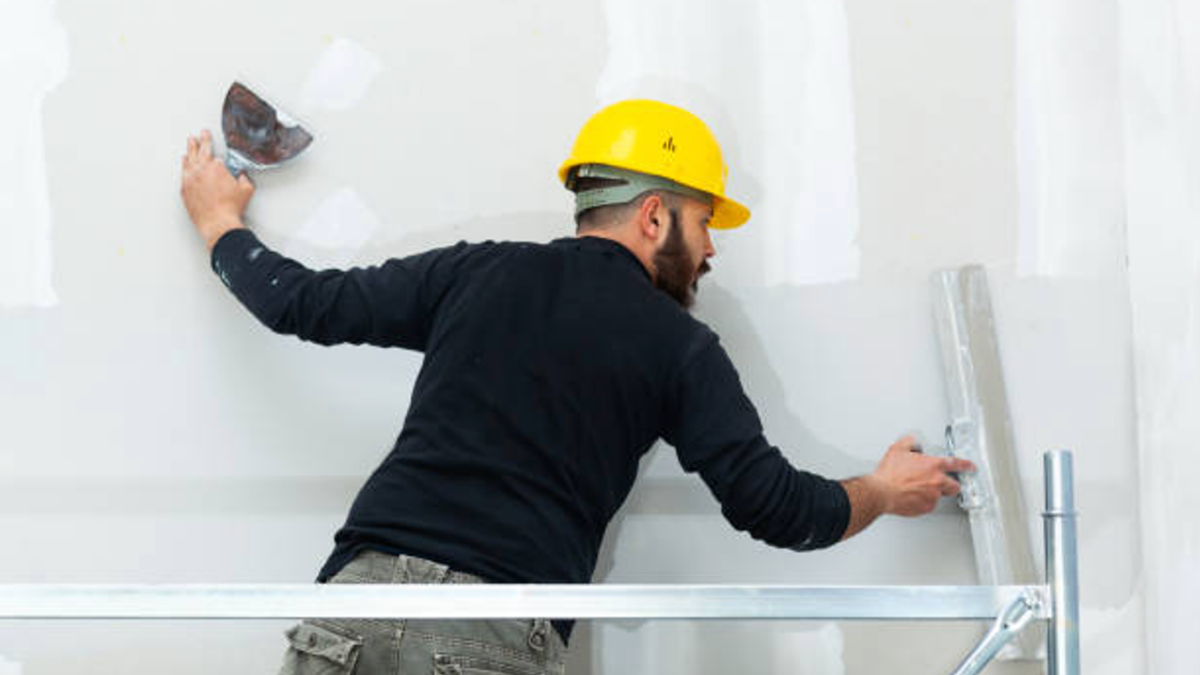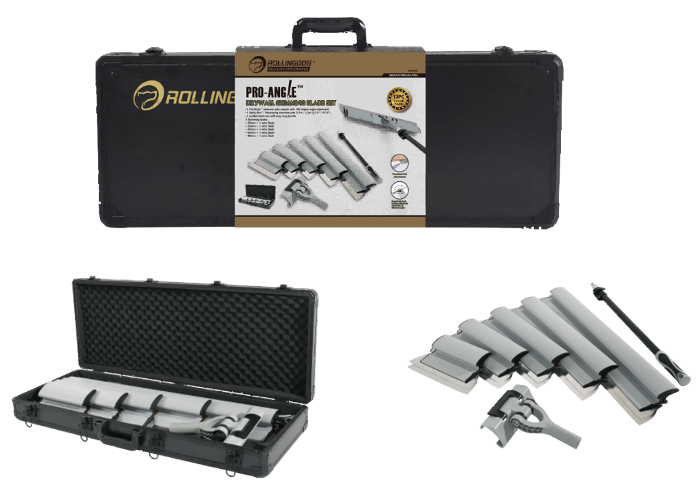
Skim coating drywall is a must-know for anyone doing home renovations, whether you’re repairing damaged walls or ugly textures or preparing new drywall for painting. This technique gives you a smooth surface and makes it easier to get a high-quality finish in your painting project. But for a good skim coat, the tools you choose are just as important as the technique.
One of the most important tools in your kit should be the drywall skimming blade set which brings an even and clean finish. This article will go over the process of skim-coating drywall and how to choose the best tools.
Table of Contents
What is Skim Coating Drywall & When Should You Do It?
Skim coating drywall refers to applying only a very thin layer of joint compound called “mud” over the drywall surface to produce a smooth, uniform surface. This process is involved in:
1. Repairing Damaged Walls
Over time, due to settling, nail holes, cracks, and dents, the walls may severely become damaged. All these defects cause bumps on the wall and leave an uneven finish at the time of painting. Skim-coating brings drywall back to its perfect state by filling up these imperfections with a uniform texture.
2. Unattractive Surfaces (Popcorn Walls)
Older homes have textured walls like popcorn ceilings or rough surfaces that don’t fit modern interior design. By skim coating, you can get a smooth finish, eliminate outdated textures, and have a clean canvas for painting.
3. New Installs
When installing new drywall, seams and screw holes are unavoidable. Although these areas are taped and mudded, a final skim coat will make the surface smooth and eliminate any visible seams or imperfections.
After spreading the joint compound using a drywall skimming blade or trowel, then the surface is smoothed out even to get rid of imperfections.
How to Skim Coat Drywall: A Step-by-Step Guide
If you are new to skim coating, this is your step-by-step guide on how to get a professional finish in your drywall.
Step 1: Prepare the Surface
Remove everything from the walls and clean it free of all forms of debris, dust, or grease. Protect any electrical outlets, light switches, as well as any furniture and floors with plastic sheeting to prevent dust and compound splatter. Sand down any high spots or rough textures in order to result in a completely smooth base.
Step 2: Mix the Mud
Mud is the main material used for skim coating. You can buy pre-mixed mud or mix powdered mud with water. When mixing, aim for a smooth peanut butter-like consistency that will spread easily on the wall.
Step 3: Apply the Skim Coat
Using a drywall skimming blade, skim all the mud onto your wall. Hold the skimming blade at a 30-degree angle and spread a layer of mud about as thin as a white sheet of paper. For best results, work from top to bottom, filling all the space from one end of the blade to the other, and work in very long sweeping motions. Each pass you make overlaps slightly, so you get full coverage.
Step 4: Sand the Surface
Once the skim coat is dry (which takes 24 hours), it’s time to sand. Use fine-grained sandpaper to knock down ridges or rough spots that have developed from the application. Don’t over sand as you don’t want to expose the drywall underneath.
Step 5: Prime the Drywall
After sanding, apply a coat of primer to seal the skim-coated surface. This step will ensure the drywall absorbs paint evenly and prevent any imperfections in the finish.
How to Choose the Best Drywall Skimming Blade Set
Choosing the right drywall skimming blade set can improve how easy and good your skim coating project turns out. Here are some key factors to think about when choosing a skimming blade set:
1. Blade Material and Length
Material and length do matter for the skimming blade. Stainless steel blades ensure durability and resistance to rust. Longer blades are preferable when the area is larger, while shorter blades suit smaller and tighter spaces. A preferable set should allow you to have several blade lengths for both types of areas.
2. Handle Comfort and Grip
A skimming blade is often overlooked but very important for reducing hand fatigue during a long project. Look for an ergonomic handle with a non-slip grip. Rubberized handles are good in terms of extra comfort and control, especially when working for hours.
3. Blade Flexibility
The flexibility of the blade determines how well it can bend and conform to the surface being worked on. A flexible blade is good for smooth and consistent application of the mud. But for walls that are very uneven, a stiffer blade may be better. Make sure the skimming blade you choose has the right balance of flexibility and control.
4. Maintenance
Durability is an important issue, so opt for a blade that can be easy to clean and maintain. Most stainless blades do not only resist rust but are easier to clean as well. Cleaning your blade after every use will remove the remaining joint compound on the blade, and dry it at a safe place to extend its life.

The Rollingdog PRO-ANGLE™: Your Skimming Blade Solution
This drywall skimming blade 13-piece set is designed for pros who demand precision and efficiency. It features five ultra-durable stainless-steel blades (ranging from 25cm to 80cm), perfect for tackling any surface, big or small. With a sleek brushed finish, these blades glide smoothly over drywall, delivering a superior, streak-free finish every time.
What sets it apart? The adjustable 1.2m telescopic aluminum pole offers extended reach, so you can easily handle high or hard-to-reach areas. On top of that, the set comes in a rugged aluminum case, keeping your tools safe and organized.
Conclusion
Skim coating drywall is a must-do for smooth walls in any renovation or building project. From fixing damaged walls to removing old textures, the right tools and techniques will make all the difference in your outcome. Choosing the best drywall skimming blade set is important, and Rollingdog PRO-ANGLE™ is one of the best out there, with great quality, comfort, and durability.
Looking for professional wall painting tools? Rollingdog has you covered.